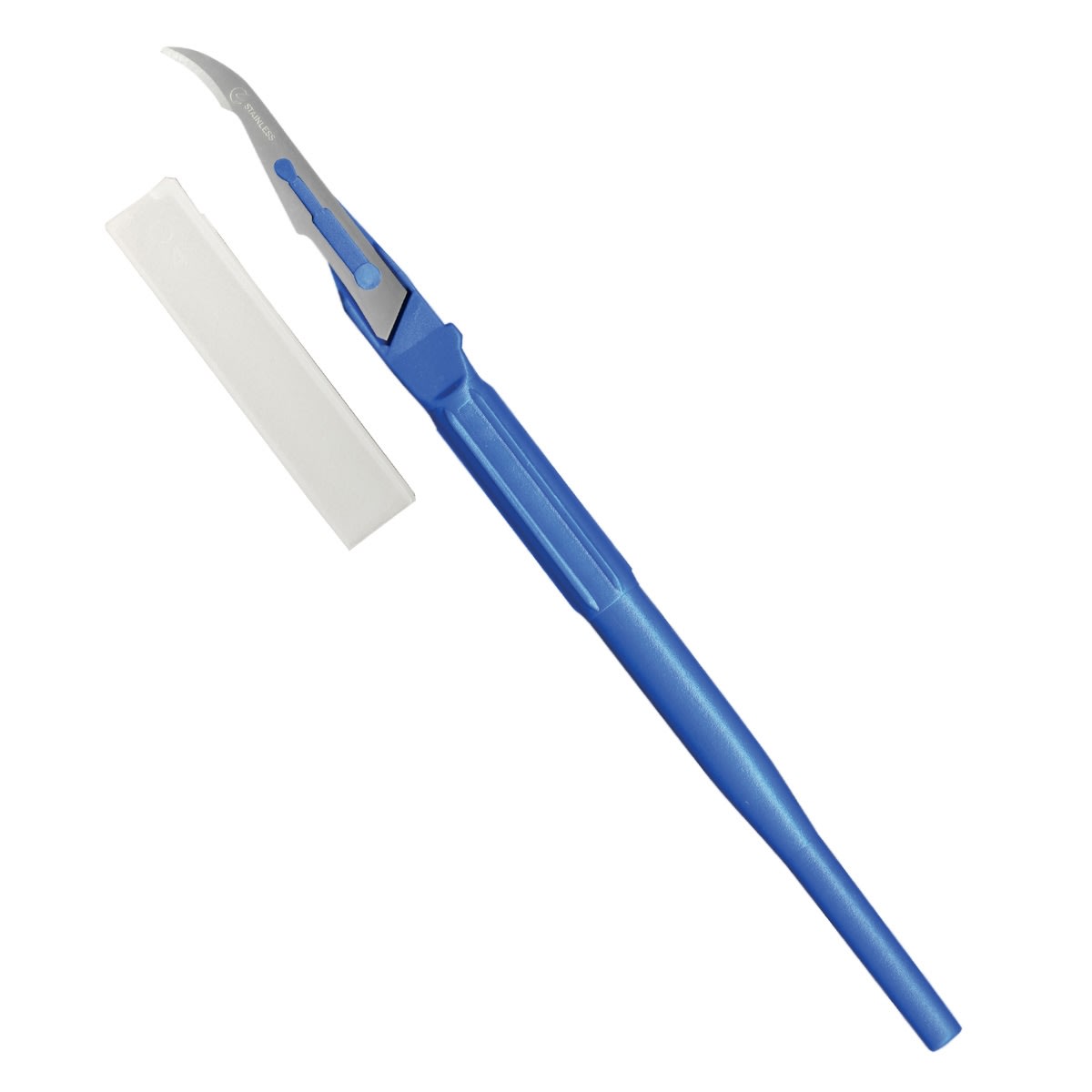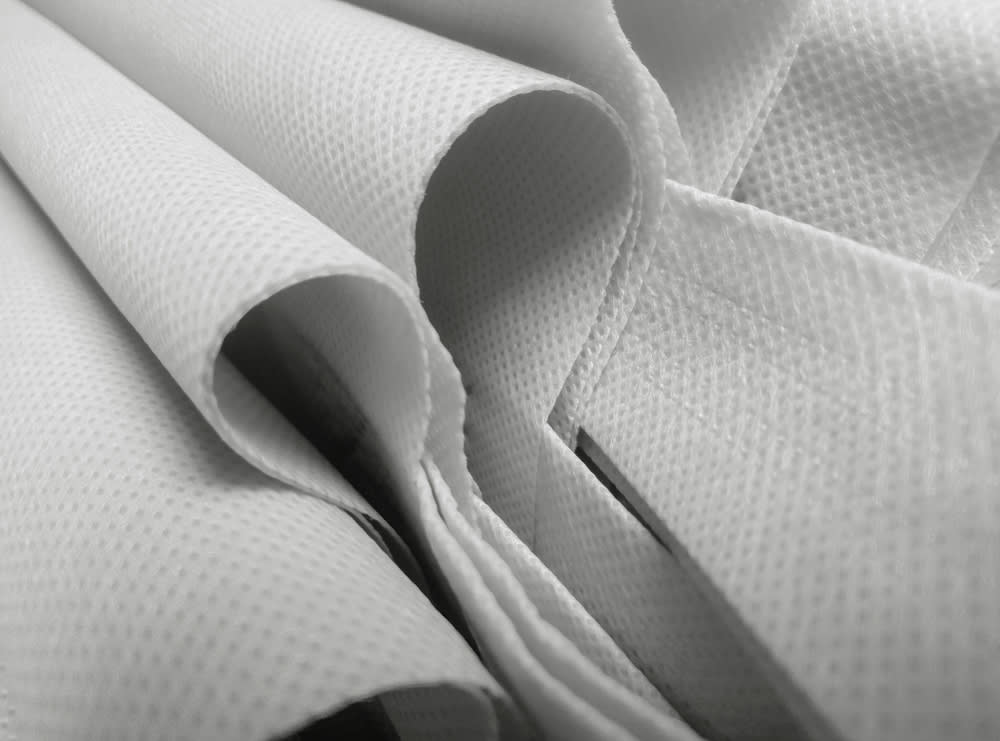Textile Prints: Types, Costs, Comparisons



Are you planning to put textile print in your collections? Choosing one from the available textile printing methods can be a daunting task. Textile prints in your collection say a lot about your design style. Choosing the right textile printing method is crucial to making your collections eye-catchy and appealing.
Types of Textile Prints
Let’s go through each type of textile print method and its costs. In addition, we will also compare them to find out which method would be most suitable for your designs and collections.
Hand- Block Textile Prints
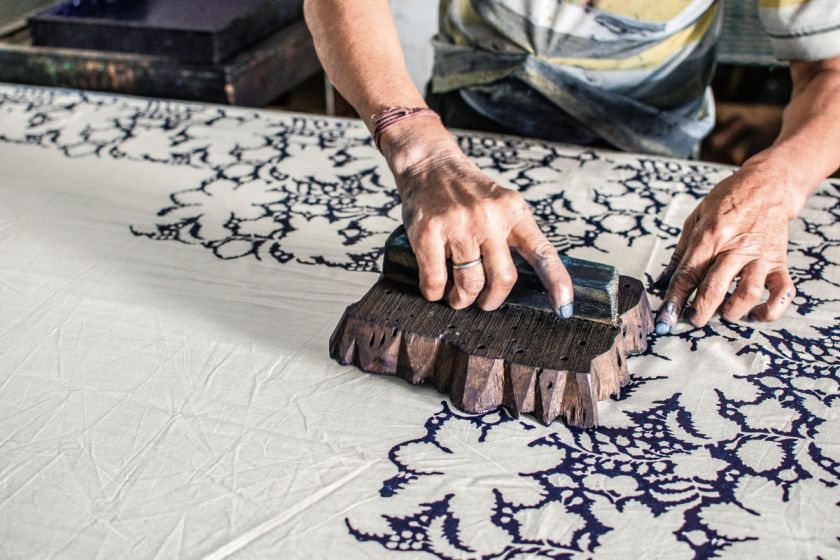
● Hand block textile prints are the simplest and oldest type of textile printing. This type of textile print has been used by manufacturers for years in order to print textiles on fabrics.
● In this type of textile print, a 3-inch wooden block is imprinted with a pattern and then dipped in ink. After this, the wooden block is pressured firmly on the textile and the ink leaves a pattern on the textile.
● Hand block printing ensures that each textile print fits exactly as the first.
● The prints produced through this type of textile printing have great decorative value.
● Costs-The costs and time duration of hand blick textile prints depend on the number variety of colors used. If you use a single color for printing, it takes less time and is of low cost. On the other hand, if you use two or more colors for printing, it costs more and more time. Multiple design printing cannot be done through one printing, so two or more than two printing are required.
Copper roll fabric textile print
● Copper roll fabric textile print is a type of technique that is similar to hand block textile prints but allows a faster printing rate.
● In this method, a role is used for printing textile prints on fabric. The copper roll is inscribed with the pattern and dipped in ink. Then the roll is rolled over the textile that leaves a pattern.
● This type of textile print enables users to print larger patterns of textile on fabric with a faster printing rate than the hand-block textile prints.
● Costs- It costs more than the hand block printing method.
Screen Printing
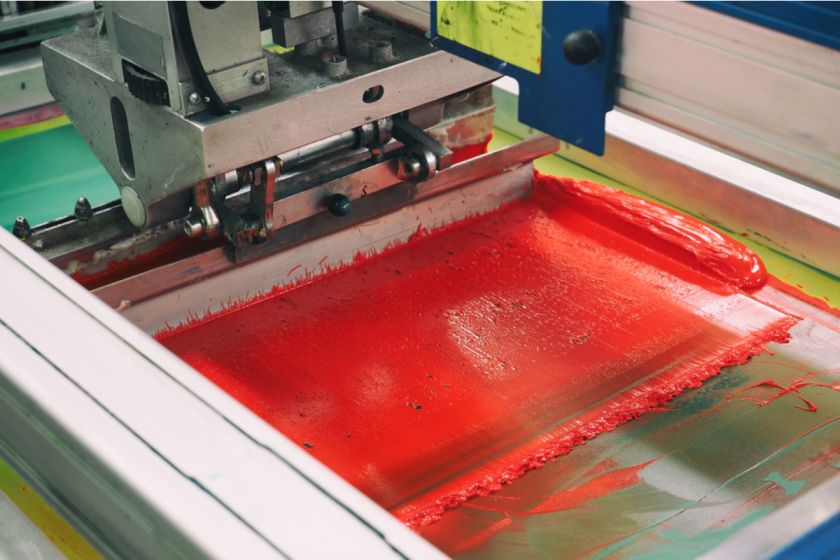
● Screen printing is a type of textile print in which patterns are printed on textile using a nylon mesh.
● A textile print pattern is created by closing the holes in the nylon mesh at the places where no ink should seep.
● Then, a template is made which can be used for textile prints.
● It produces a high-quality print with a good resolution.
● It works best when geometric shapes with few numbers of colors are used. It is not recommended for multicolor prints as each print requires a different screen for printing.
● Costs- It costs more as it needs the preparation of excessive screens.
Rotary Screen Textile prints
● In 1963, innovation in textile prints resulted in the invention and development of roast screen printing.
● The unique feature in this type of printing is seamless, round screen is used rather than a flat one.
● The use of such a screen allows manufacturers, designers to print large pieces of textile at a time with a faster printing rate.
● Due to the cost of preparation of screens, it is not applicable for individual pieces.
● Costs- It is cost-effective when used in printing bulks. As with each number of increased goods, the price of a single good decreases.
Digital Textile Printing
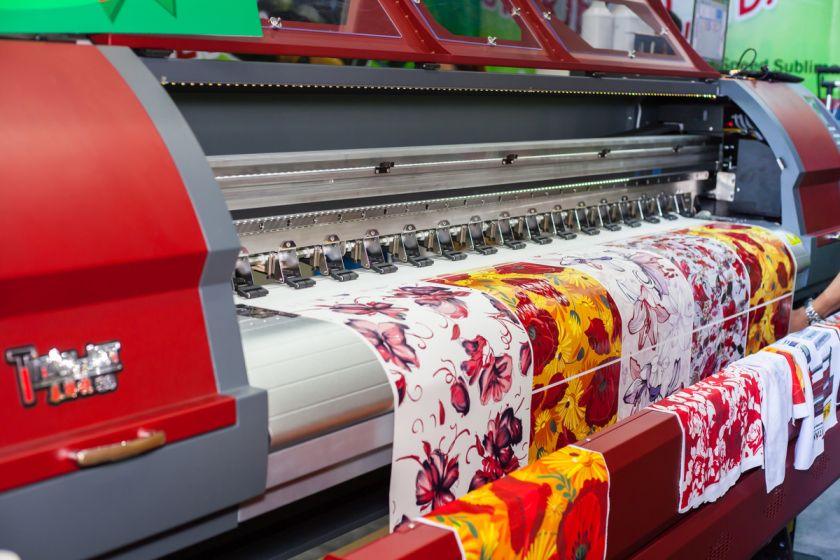
● Rotary screens require a lot of money and it is time-consuming because for every design a new screen has to be prepared, one screen for one color. Hence, Digital Textile printing is invented that enables cost-effective printing and saves a lot of time.
● Digital Fabric print is on-trend nowadays. In the digital printing method, the fabric is first pretreated, and then it will pass through an inkjet printer at a high speed, and then it will subsequently be washed, steamed, dried, and finished. It is a fast method of printing, and it provides short-term delivery.
● Digital Textile prints enable manufacturers and designers to directly print a digital design on the textile.
● In this method, no screen is needed for textile prints.
● It saves a lot of costs and allows manufacturers to print different types of unique and creative designs instead of designs that repeat themselves.
● In digital textile prints, printheads are used rather than the screen to move the fabric from left to right and are placed on the fabric width that enables uninterrupted and fast printing.
Digital textile prints are the latest innovation in textile printing methods. Designers and manufacturers choose this type of textile print because of the design flexibility, short delivery time, unlimited color, and high image quality.
Through digital fabric printing, prints can be adjusted digitally on the spot. It allows manufacturers, designers, and fashion owners to meet the demands of providing high-quality, rapid turnarounds and trending fabrics and designs. Digital fabric prints are fast-growing throughout the world, and their demand is increasing day by day.
Choose the right textile print for your designs and collections.
The first and foremost check to choose a textile print technique is knowing what fits best for your customer's needs and wants and what is on-trend nowadays. Do your customers want their designs with multiple textile prints? And are you willing to fulfill your customer wishes by lowering cost and production efficiency? Then digital textile prints are the finest solution you could ever have.
Are you having trouble finding the sources for textile prints? Well, Fashinza is here for you. Fashinza will do the work of textile prints for you!
Fashinza is a B2B apparel manufacturing platform. They help clothing brands to manufacture their collections by connecting them with suppliers. They oversee the entire production process from design to delivery. Their partner brands only need to place the order.
Brands can use the Fashinza platform to place manufacturing orders for their collections and have them delivered, with options to track, communicate, and make payments along the way. Fashinza makes the apparel manufacturing process hassle-free, fast, and transparent for the brands.Contact Fashinza today to know more about textile prints and to source the right textiles.
















